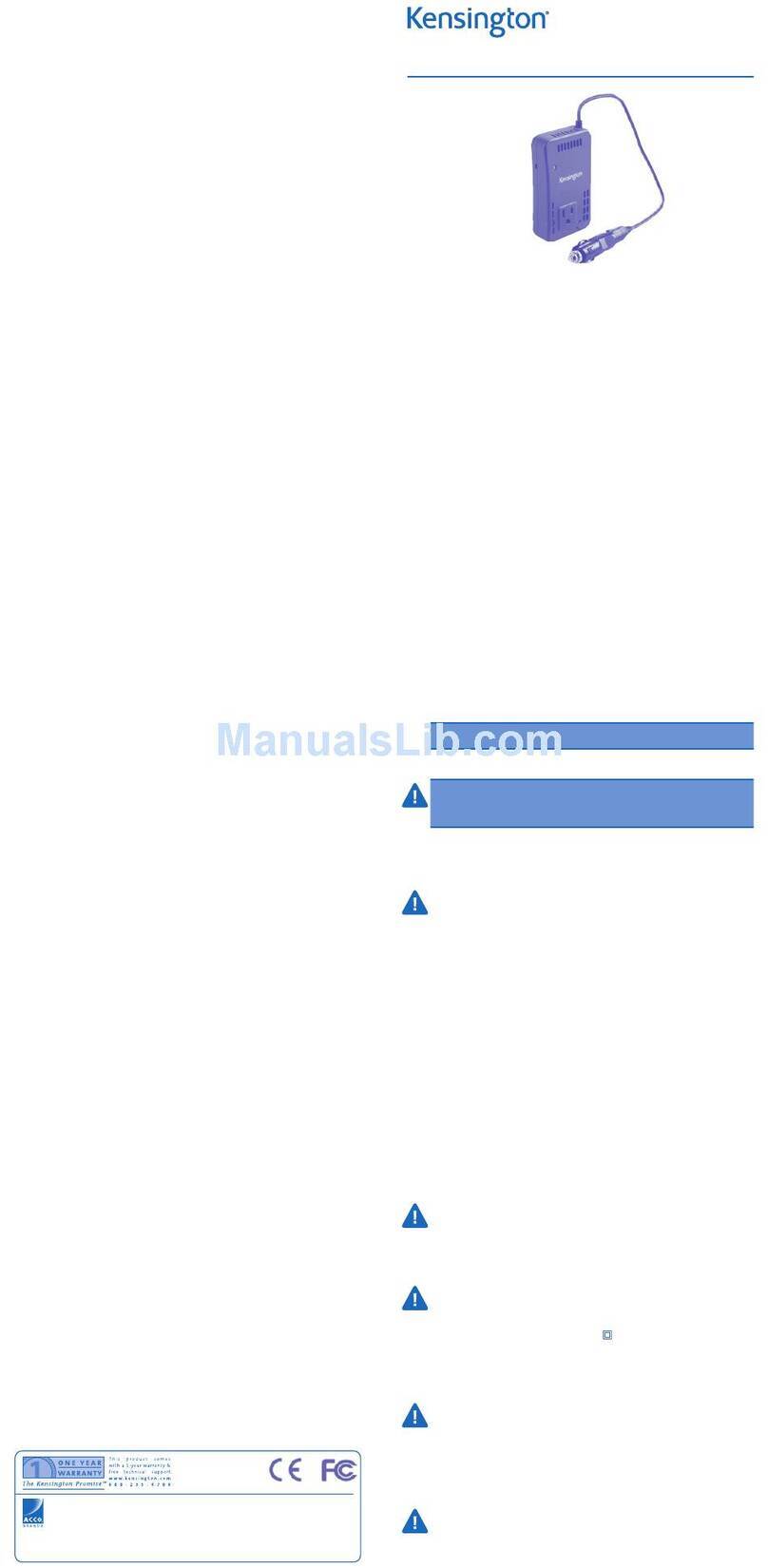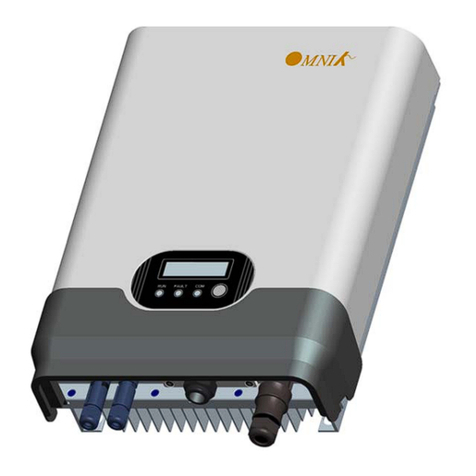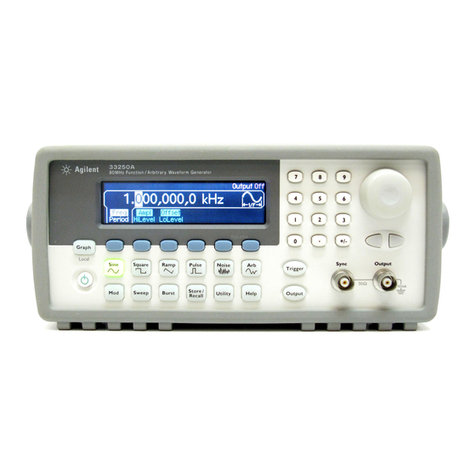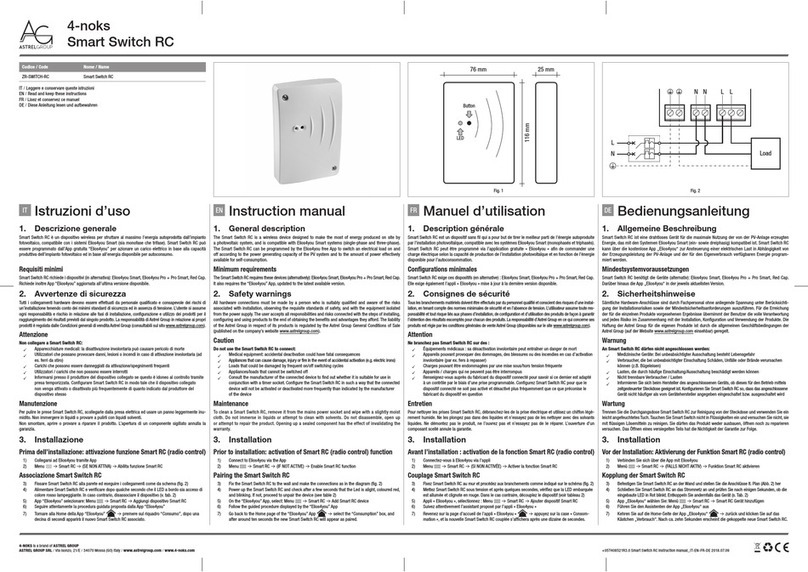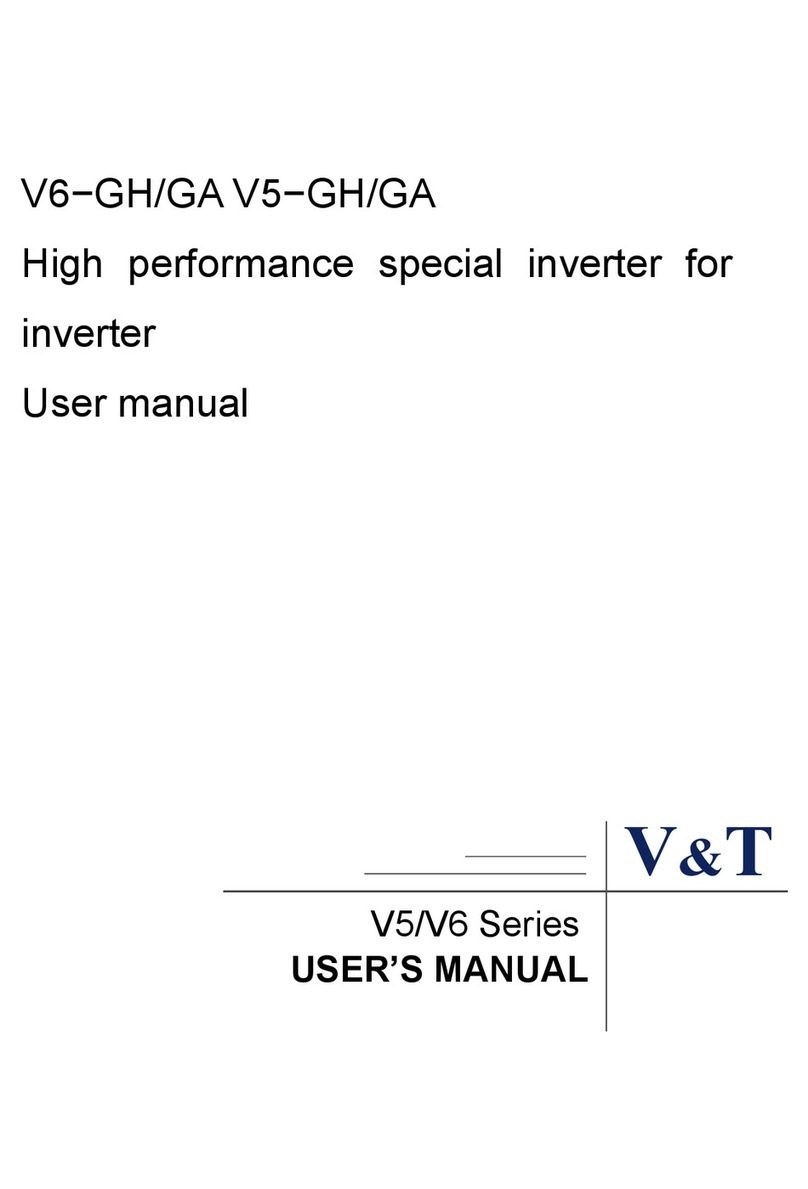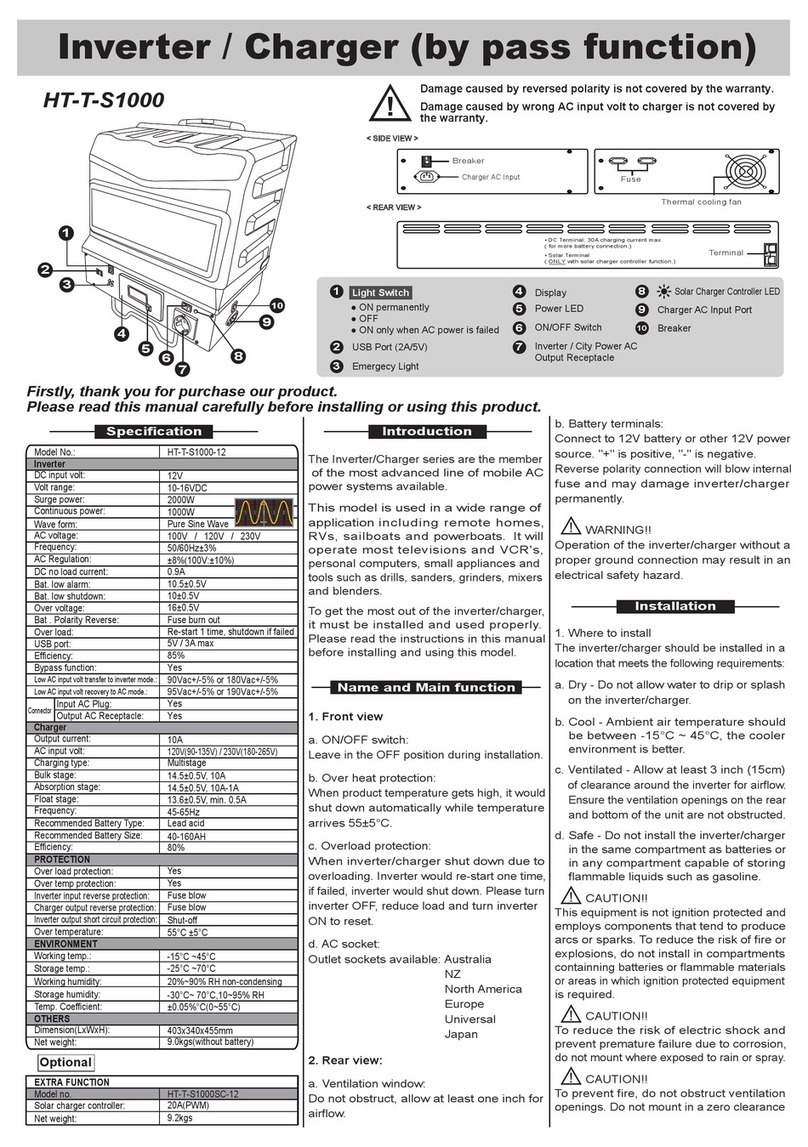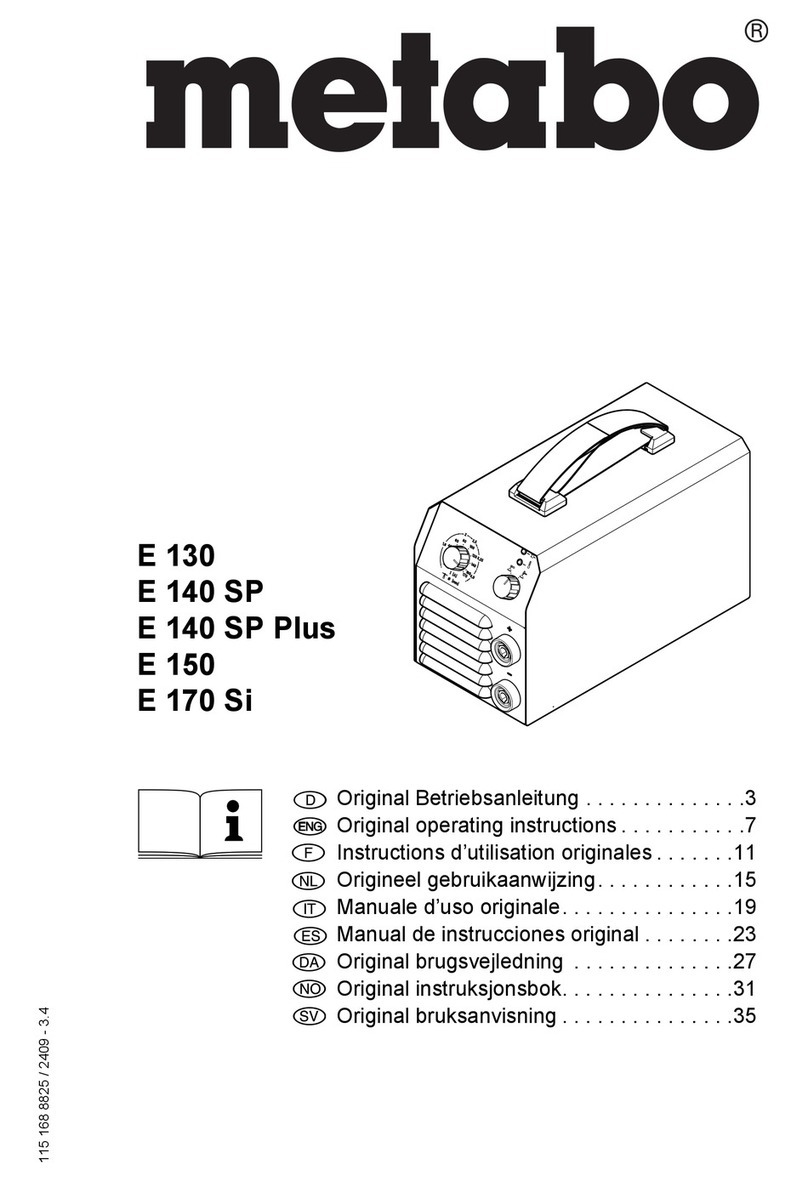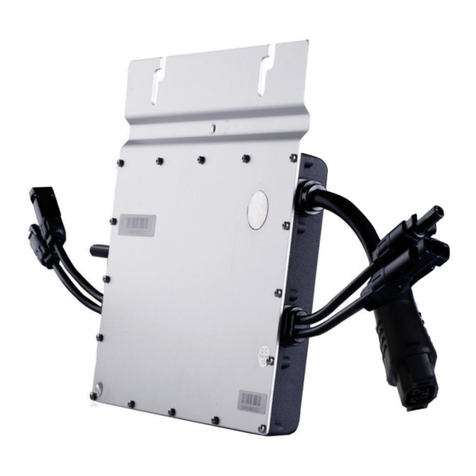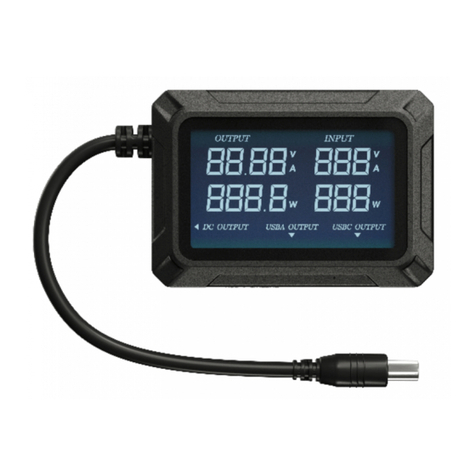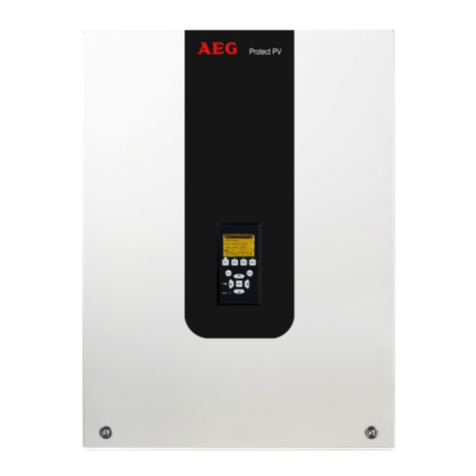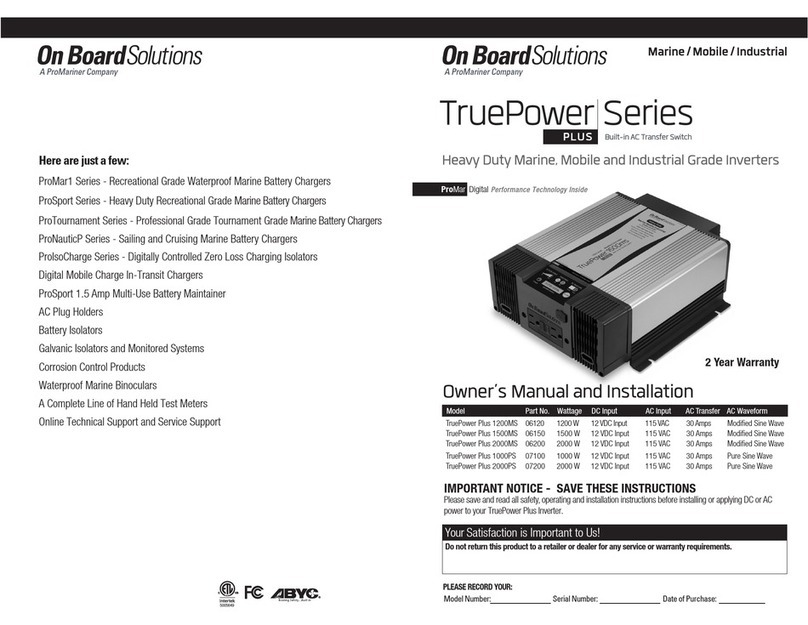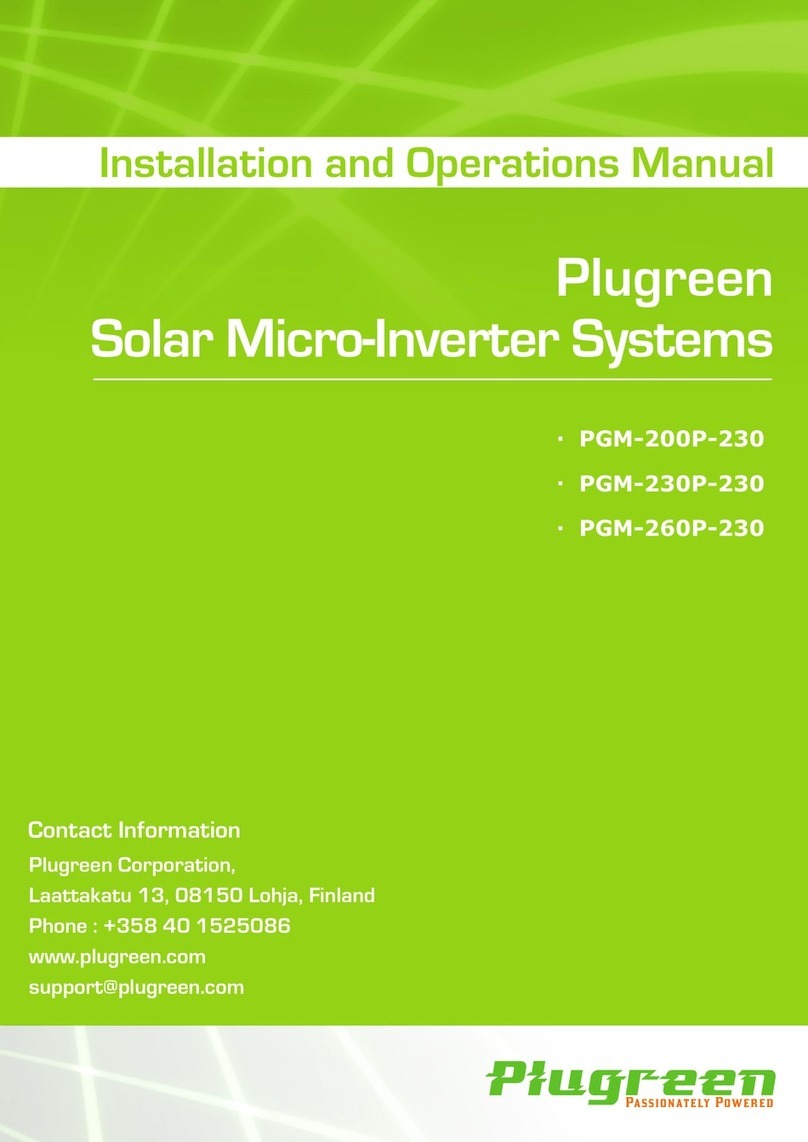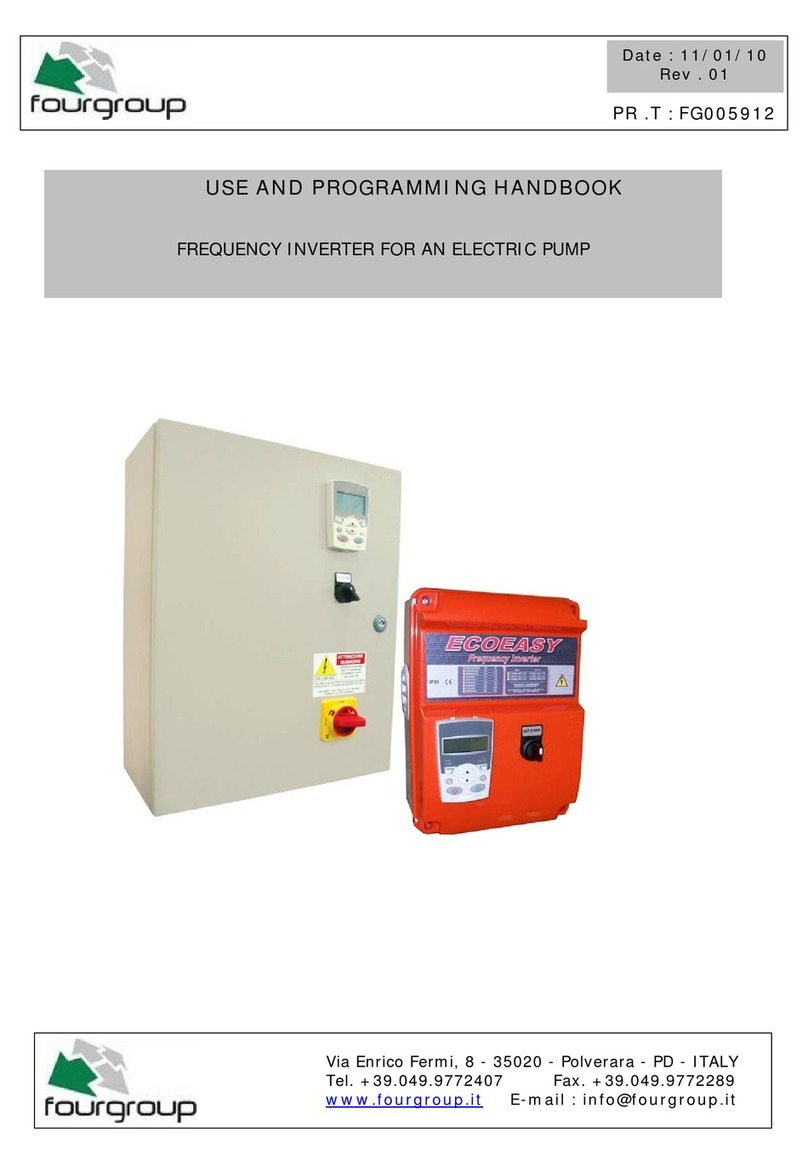Kensington 33214 User manual

150 Watt Portable Power Inverter
User Manual
Congratulations!
Your new Kensington 150 Watt Portable Power Inverter is highly efficient for
use in your car, truck, RV or boat
Please read this short manual to learn valuable information about the
safe and proper use and installation of your new Inverter Register on line
at www.kensington.com/register.
Your new Inverter is one of the most advanced DC to AC Inverters available
today Its compact and sleek design is lightweight at only 0 9 lbs With proper
care and usage, it will give you years of reliable service in your vehicle
The Inverter supplies 115 volt AC power in a continuous stream of 120 Watts,
and up to 150 Watts of peak power for start-up of your AC product The
Inverter is ready to supply AC power whenever and wherever you need it!
The Inverter can operate most portable household or electronic appliances,
including color TV’s (up to 13"); TV/VCR combinations; laptop computers;
cellular phones; lamps, AC adapters, and more
150 Watt Inverter • 1
READ FIRST!
33214_150WattInvtr 3/25/05 3:52 PM Page 1

• Do not replace Inverter’s fuse with anything other than the specified fuse
• Do not use the Inverter if it is in any way damaged Inspect Inverter, including
cords, for damage before each use
Warning! Do Not Run Your ehicle’s Engine in a Garage or Other Enclosed Area!
If you are running your vehicle’s engine while stationary to power the product
you have plugged into the Inverter, or to re-charge the vehicle’s battery, do so
only in a well ventilated area, and away from other enclosed areas Automotive
and recreational vehicles emit carbon monoxide which can cause serious injury
or death if the vehicle’s engine is running in a garage or other enclosed area, or
near other enclosed areas
Warning! The Inverter May Become Hot During Operation, and Requires
Proper entilation!
To Prevent Injury and Property Damage:
• Do not place the Inverter in direct sunlight
• Provide adequate ventilation and refrain from placing items on the Inverter
during operation
• Do not use the Inverter inside a closed glove compartment or console
• Keep the Inverter away from flammable materials or other items that can be
damaged by high temperatures
• Do not operate the Inverter near flammable fumes or gases
• Loose connections can generate harmful heat and/or damage the Inverter or
power source To prevent this periodically check that the Inverter’s input and
output connections are tight
• Do not operate or leave the Inverter unattended while in use
Features
1 Three-prong AC outlet
2 Pass-through cigarette lighter outlet (DC)
3 Automatic over-voltage shutdown
4 Automatic low battery voltage shutdown
5 Automatic overload shutdown
6 Automatic short circuit shutdown
7 Automatic overheating shutdown
8 Low voltage battery monitor
Important: Safety Information
Warnings: This manual contains important safety and operating instructions
for your Inverter Please carefully read this section to reduce the risk of injury
and property damage, and pay attention to the following:
Warning! Electrical Hazard!
The Inverter generates the same potentially lethal AC power as a normal house-
hold wall outlet
To Prevent Serious or Fatal Injury and Property Damage:
• Keep away from children
• Do not insert foreign objects into the AC outlets
• For vehicle use only Do not expose to water, rain, snow or spray
Keep Away
From Fire
Dry Location
Use Only
Vehicle
Use Only
High
Voltage
Caution Do Not
Open
150 Watt Inverter • 32 • 150 Watt Inverter
33214_150WattInvtr 3/25/05 3:52 PM Page 2

Using your Kensington Power Inverter
To connect your Kensington Power Inverter:
1 Connect the Inverter to the power source by inserting the cigarette
lighter plug firmly into the cigarette lighter socket of a vehicle or other
DC power supply
2 Plug the AC product into the AC receptacle and turn the product on
3 Ensure your product or products plugged into the Inverter do not draw
more than 120 Watts of continuous AC power
Preventing Overheating
1 The Inverter needs to have the best possible air flow around it while
operating Note the air flows into the bottom (intake) vents and out
(exhaust) through vents inside the rubber bumpers Do not restrict
the airflow as the Inverter may overheat
2 Do not place the Inverter in direct sunlight, on or near a heating vent or
heat-generating equipment
3 Ambient air temperature should be between 23 and 122° F (-5 – 50° C)—
optimal performance temperatures are between 60 and 80° F (15 – 25° C)
Automatic Overheating Shutdown
If the Inverter’s internal temperature rises above 140° F (60° C) the Inverter
will automatically shut itself off Once the Inverter cools down sufficiently, the
Inverter will automatically restart
Warning! Some AC Products are Not Compatible with the Inverter!
If either the fuse is blown or otherwise the overload protection components are
activated then do not continue attempting to power any of the following:
• AC load circuit in which the neutral conductor is connected to ground (earth)
or to the negative of the DC (battery) source
• RV or household AC distribution wiring or extension cords
• The following equipment:
• Small battery-operated products such as rechargeable flashlights, some
rechargeable shavers, and night-lights that are plugged directly into an
AC receptacle to recharge
• Certain battery chargers for battery packs used in hand power tools
These chargers will have warning labels stating that dangerous voltages
are present at the charger’s battery terminals
• The Inverter will not operate appliances and equipment that produce heat,
such as microwave ovens, toasters and hair dryers Do not use the Inverter
with those products
• This Inverter is not recommended for use with inductive loads such as:
pumps, compressors, or fluorescent lamps
150 Watt Inverter • 54 • 150 Watt Inverter
33214_150WattInvtr 3/25/05 3:52 PM Page 4

Operation of the Inverter’s Automatic Shutdown Features
Over-voltage - The Inverter automatically shuts down when the input voltage
from the vehicle or battery exceeds 15 6 Volts DC
Low-voltage - An audible alarm will sound and the Inverter will shut down
when the battery voltage reaches the lower voltage range of battery health:
11 3V When the condition is corrected, the unit will restart
Overload - The Inverter automatically shuts down when the continuous AC
draw exceeds 150 Watts
Short circuit - The Inverter automatically shuts down when it detects a short
circuit or reverse polarity This condition will usually result in the fuse being
blown Immediately disconnect the shorted load and replace the fuse as
described in Fuse Replacement (see page 8)
Overheating - The Inverter automatically shuts down when its internal temper-
ature rises above 140° F (60° C) Allow the unit to cool for at least 15 minutes
before restarting after a heat-related shutdown Unplug unit while cooling
Starting and Running the ehicle’s Engine
• The Inverter may be used whether or not the vehicle’s engine is running
However, the Inverter may momentarily stop operating while the engine is
starting since the battery voltage can drop substantially during cranking
• The Inverter draws less than 0 3 Amps from the battery when it is not
supplying power to a load Therefore, in most instances, the Inverter can
be left connected to the battery when not in use since it draws so little
current However, if the vehicle is to remain unused for more than one
day, disconnect the Inverter from the battery
• Depending on variables such as battery condition, device being operated,
even weather, an automotive battery can be discharged after 2 to 8 hours of
use Users should either monitor voltage or start the vehicle every hour to
recharge the vehicle’s battery This will guard against any unexpected shut-
down of the equipment and will ensure that there is always sufficient power
to start the vehicle
• With the engine running the battery has much more capacity available and
at a higher voltage If the Inverter is shutting down due to an excessive load
with the engine off, keeping the engine running may remedy the problem —
Heed the garage/enclosed area warning!
150 Watt Inverter • 76 • 150 Watt Inverter
33214_150WattInvtr 3/25/05 3:52 PM Page 6

Additional Information Regarding Power Requirements
DC Power Source Requirements:
The Inverter must be connected only to batteries with a nominal output voltage
of 12 Volts The unit will not operate from a 6-Volt battery and will be damaged
if it is connected to a 24-Volt battery The power source must provide between
11–15 5 Volts DC The power source may be a battery or other well-regulated
12V DC power supply Check your vehicle’s owner manual
The power supply must also be able to deliver the amperage necessary to
operate the load created by the AC product As a rough guideline, divide the
power consumption of the load (in Watts) by 12 (the input voltage) to obtain
the current (in Amps) the power source must deliver Example: If the AC televi-
sion is rated at 120 Watts; the power source must be able to deliver:
(120/12) = 10 Amps Most vehicular 12V cigarette lighter outlets have fuses
that will permit the outlet to draw 20 Amps
AC Power Draw Guidelines:
Most electrical tools, appliances and audio/video equipment have labels that
indicate the power consumption in Amps or Watts Be sure that the continuous
power consumption of the item(s) you wish to operate is rated at 120 Watts or
less If the power consumption is rated in Amps, simply multiply by the AC volts
(115) to determine the wattage For example, a power drill rated at 1 Amp will
draw 115 Watts Do not use the Inverter to operate product(s) that require more
than 120 Watts of continuous power
Fuse Replacement
If the Inverter is overloaded and the (20A) fuse is blown, unplug the Inverter
to replace the automotive type 20A fuse in the cigarette lighter plug which is
accessed by unscrewing the knurled chrome trim piece at the end of the plug
If the cigarette lighter outlet fuse in your vehicle has blown, unplug the
Inverter Follow the vehicle manufacturer’s instructions for replacing the fuse,
and replace the fuse only with the identical rating and type of fuse Using any
other fuse can result in serious or fatal injury and property damage.
Determine the cause of the overload/short circuit before restarting
your Inverter
150 Watt Inverter • 98 • 150 Watt Inverter
33214_150WattInvtr 3/25/05 3:52 PM Page 8
Table of contents
Other Kensington Inverter manuals
Popular Inverter manuals by other brands
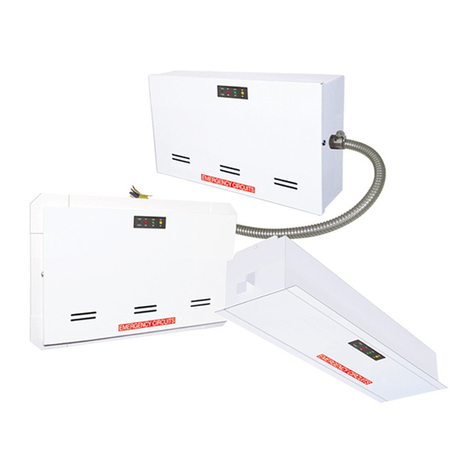
BARRON
BARRON EXITRONIX Tucson Micro Series installation instructions
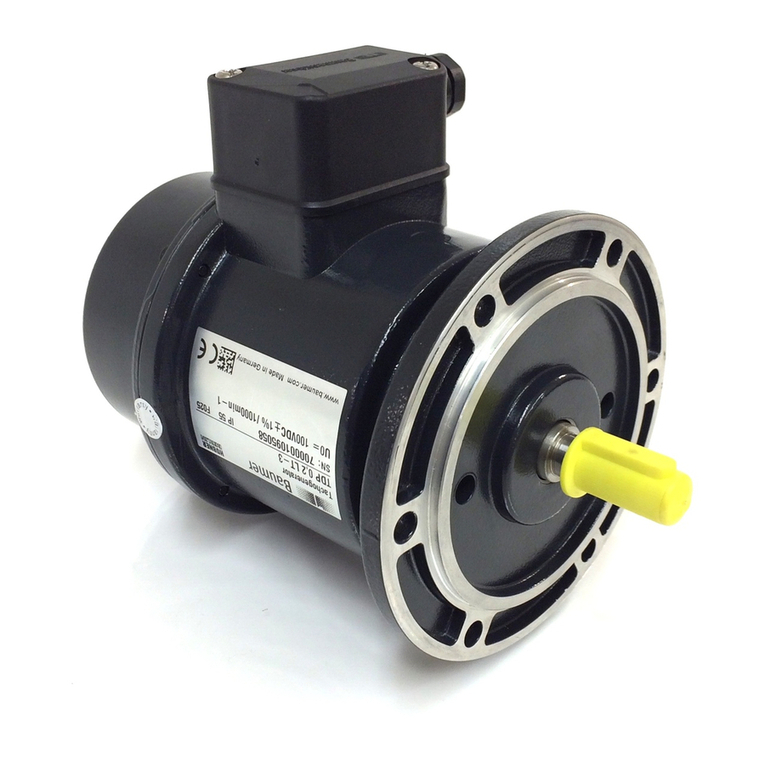
Baumer
Baumer HUBNER TDP 0,2 Series Mounting and operating instructions
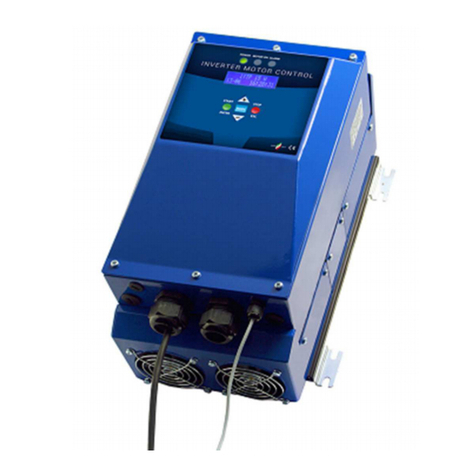
electroil
electroil ITTPD11W-RS-BC Operation and Maintenance Handbook
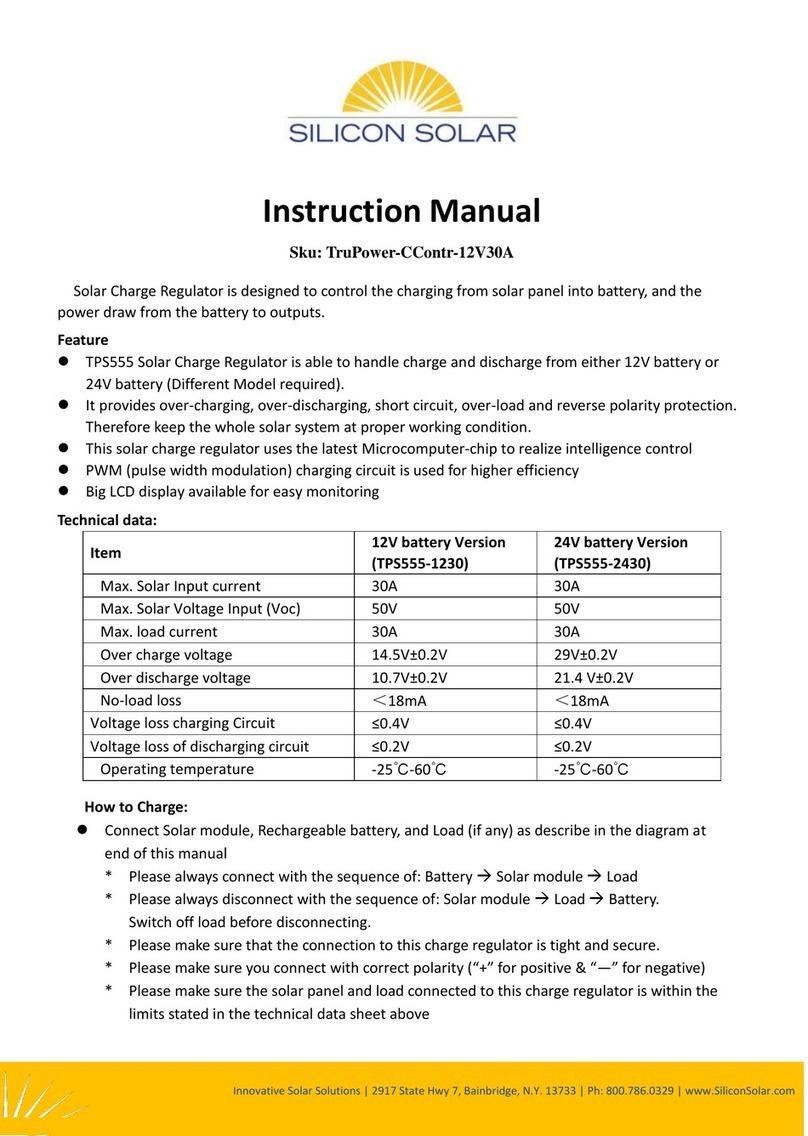
Silicon Solar
Silicon Solar TPS555-1230 instruction manual
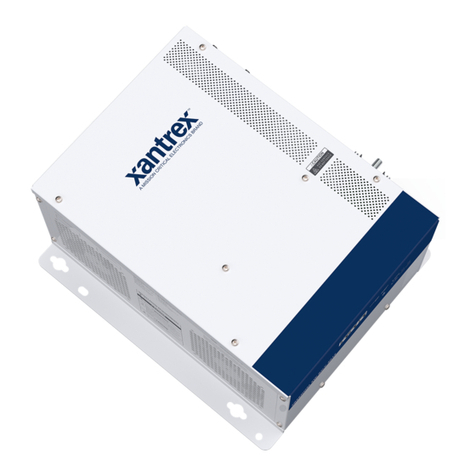
Mission Critical
Mission Critical Xantrex Freedom SW-RVC owner's guide
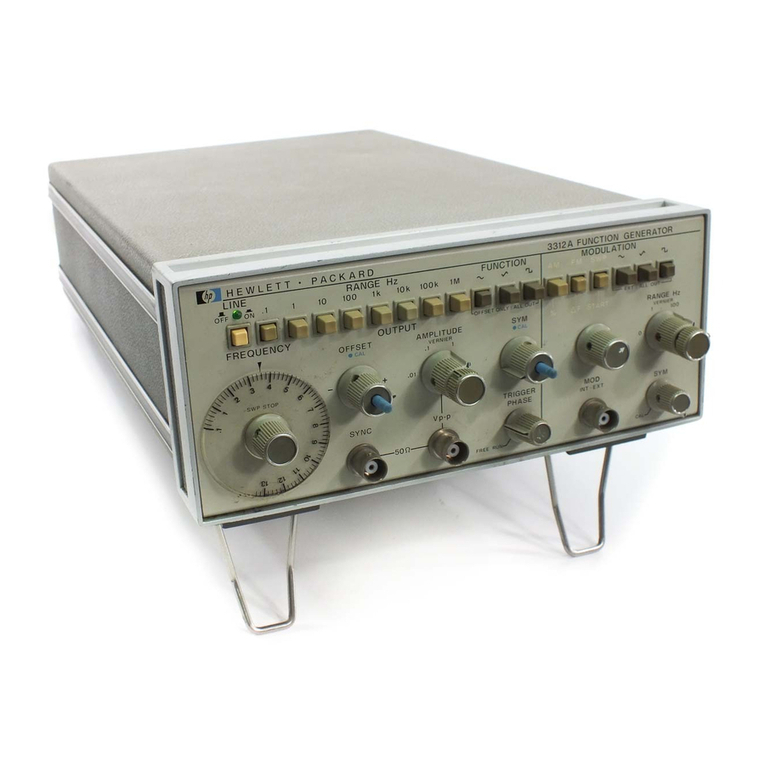
HP
HP 3312A Operating and service manual


